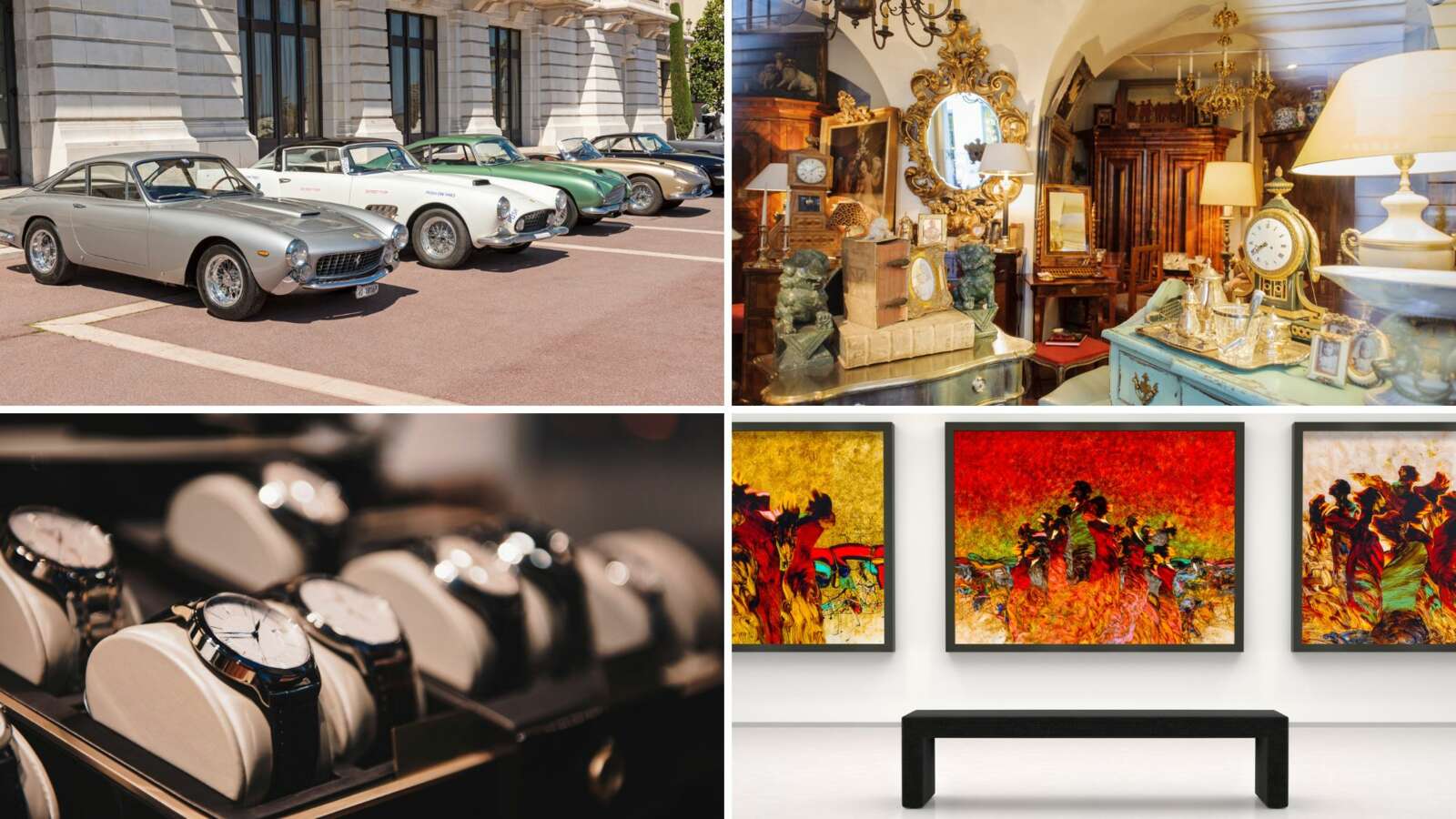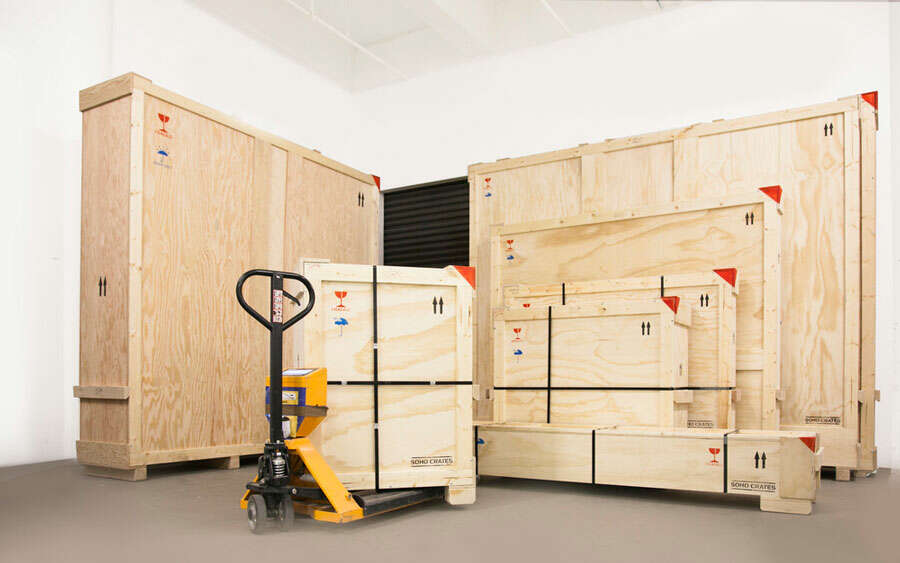Shipping luxury items is an intricate and vital service in today's globalized economy, catering to the needs of affluent individuals and businesses across various sectors. Whether it involves transporting high-end automobiles, fine arts, antiques, or other valuable assets, the demand for specialized shipping services has surged. This growing market is driven by the increasing mobility of wealth and the expanding reach of luxury markets worldwide.
Understanding luxury items

Shipping high-value items involves a sophisticated blend of precision, security, and expertise. Unlike standard shipping, these high-value shipments necessitate a deep understanding of the unique characteristics and requirements of each item. Shipping companies specializing in luxury items must consider several factors to ensure safe and efficient transport.
Luxury items encompass a wide range of products and according to the Transported Asset Protection Association (TAPA), luxury or high-value shipment is anything worth or over $100,000.00. Each with its specific handling and shipping needs, common categories include:
- Luxury Cars: These vehicles, often worth hundreds of thousands to millions of dollars, require specialized transport to protect against damage and theft. Enclosed trailers, climate control, and advanced tracking systems are standard measures.
- Fine Arts: Paintings, sculptures, and other artworks are sensitive to environmental conditions. Shipping companies must provide climate-controlled containers and customized crating to prevent damage from humidity, temperature fluctuations, and physical impacts.
- Antiques: These irreplaceable items need careful handling and packaging to preserve their integrity. Antiques often require custom-built crates, cushioning materials, and precise documentation for insurance purposes.
- Jewelry and Watches: These small but extremely valuable items require high-security measures, including tamper-evident packaging and discreet shipping routes to mitigate the risk of theft.
Specialized packaging and handling
Shipping high-value items demands an elevated level of care and expertise. Standard packaging solutions are often inadequate for these high-value and delicate goods, necessitating customized packaging and meticulous handling procedures. This include opting for White Glove Services.
Importance of customized packaging
Why Standard Packaging Solutions Are Inadequate
Standard packaging solutions are typically designed for general goods that do not require special handling or protection. Luxury items, such as fine art, luxury cars, antiques, and jewelry, have unique vulnerabilities that standard packaging cannot address. These items are often:
- Extremely valuable: Their high monetary worth demands additional security and protection.
- Fragile: Many luxury items are delicate and prone to damage from even minor impacts.
- Sensitive to environmental conditions: Changes in temperature, humidity, and light can adversely affect items like fine art and antiques.
Materials and Techniques Used for Protecting Luxury Items During Transit
To ensure the safe transit of luxury items, shipping companies employ a range of specialized materials and techniques:
- Custom-built crates: These are designed to fit the specific dimensions and contours of high-value items, providing a snug and secure fit that minimizes movement during transit.
- Climate-controlled containers: For items sensitive to environmental conditions, such as fine art and antiques, these containers maintain a stable temperature and humidity level.
- Cushioning materials: High-quality cushioning materials, such as foam, bubble wrap, and padded blankets, are used to absorb shocks and vibrations.
- Tamper-evident packaging: This adds an extra layer of security by making it clear if an item has been accessed during transit.
- Anti-static materials: For electronic luxury items, anti-static packaging prevents damage from static electricity.

Handling procedures
Best Practices for Handling Luxury Items to Prevent Damage
Handling luxury items requires precision and care. Best practices include:
- Use of specialized equipment: Tools such as forklifts with soft forks, cranes with padded straps, and dollies with cushioned platforms help in moving items without causing damage.
- Manual handling techniques: When items must be handled manually, techniques like lifting with the knees to avoid dropping, using clean gloves to prevent contamination, and ensuring a firm but gentle grip are essential.
- Minimal handling: Reducing the number of times an item is handled during transit minimizes the risk of damage. This is often achieved by optimizing the packing and loading process to ensure items are only moved when absolutely necessary.
Role of Trained Personnel in Managing These Items
It is important to involve trained personal in the shipping process. These professionals bring a level of expertise and care that is crucial for handling luxury items. Their roles include:
- Inspection and preparation: Trained staff conduct thorough inspections before packaging to identify any pre-existing damage and prepare the item for safe transit.
- Secure packaging: Personnel are skilled in using specialized packaging techniques to ensure items are well-protected.
- Careful loading and unloading: Experienced handlers ensure that luxury items are loaded and unloaded carefully to prevent any impact or jostling.
By combining specialized materials, advanced techniques, and the expertise of trained personnel, shipping companies can ensure that luxury items reach their destinations in perfect condition. This meticulous approach to packaging and handling underscores the importance of tailored solutions in the safe transport of high-value goods.
Security measures
Shipping luxury items involves a significant amount of risk due to their high value and sensitivity. To mitigate these risks, a comprehensive security strategy is essential. This section will discuss the types of risks luxury items face during shipping, outline security protocols to protect these items, and explain the importance of insurance for luxury shipments.
Risk Assessment
Luxury items face several risks during shipping, including:
- Theft: High-value items such as luxury cars, fine arts, and antiques are prime targets for theft. Organized crime groups may specifically target these shipments, necessitating robust security measures.
- Damage: Luxury items are often fragile and can be easily damaged during transit. Fine art, for example, can suffer from minor bumps and environmental changes, while luxury cars can be scratched or dented.
- Loss: Items can be lost during transit due to mishandling, logistical errors, or accidents. The high value and irreplaceability of many luxury items make loss a significant concern.
Security Protocols
To protect luxury items during shipping, companies implement several security measures:
- GPS Tracking: Modern tracking technologies enable real-time monitoring of shipments. GPS tracking systems provide constant updates on the location of luxury items, helping to prevent theft and loss. In case of any irregularities, immediate action can be taken to rectify the situation.
- Controlled Access: Limiting access to the shipment to only authorized personnel minimize the risk of theft. Secure loading and unloading facilities further enhance protection by ensuring that the shipment is handled only by trusted individuals.
- Surveillance Systems: Continuous surveillance using cameras and other monitoring systems at storage and transfer points helps in detecting and deterring unauthorized access.
Insurance Considerations
Insurance is a critical component of shipping luxury items. Given the high value and unique nature of these items, comprehensive insurance coverage is necessary to mitigate financial losses in case of theft, damage, or loss.
Importance of Insurance
Insurance provides a safety net, ensuring that the shipper is compensated for any financial loss incurred during transit. This is particularly important for luxury items, which often have significant monetary and sentimental value.
Types of Coverage
Various types of insurance coverage are available for luxury shipments, including:
- All-risk Coverage: This offers the most comprehensive protection, covering all potential risks except those specifically excluded in the policy.
- Named-perils Coverage: This type of insurance covers only the risks explicitly listed in the policy, such as theft, fire, or collision.
- Total Loss Coverage: This covers only in the event of a total loss of the shipment, which may not be sufficient for high-value luxury items where even minor damage can result in significant financial loss.
By understanding and implementing these security measures and insurance considerations, shipping companies can ensure the safe and secure transport of luxury items, protecting both the items themselves and the interests of their owners.
Transportation methods

Shipping luxury items requires careful consideration of the transportation methods used. Different options, such as air, sea, and land transport, offer varying benefits and challenges. Choosing the right method is crucial to ensure the safe and efficient delivery of high-value goods.
Overview of Transportation Options
Air Transport
- Speed and Efficiency: Air transport is the fastest way to ship luxury items, making it ideal for urgent or time-sensitive deliveries. It offers frequent flights and extensive global reach.
- Security: Airports have stringent security protocols, reducing the risk of theft or damage. Additionally, the shorter transit times minimize the exposure of luxury items to potential risks.
- Cost: While air transport is more expensive than other methods, the speed and security it provides often justify the higher cost for luxury items.
Sea Transport
- Capacity: Sea transport can handle large volumes and oversized luxury items, such as luxury cars and extensive collections of fine art or antiques.
- Cost-Effectiveness: It is generally more economical than air transport, especially for bulk shipments or items that are not urgently needed.
- Security and Conditions: Modern shipping containers and vessels are equipped with advanced security measures and climate control systems to protect sensitive items during long journeys.
Land Transport
- Flexibility and Accessibility: Land transport, including trucks and specialized carriers, provides flexible routes and access to locations that may not be reachable by air or sea.
- Specialized Vehicles: Equipped with features such as climate control and advanced suspension systems, specialized vehicles can safely transport fragile and high-value items.
- Coordination with Other Methods: Often used in combination with air and sea transport, land transport is essential for the first and last miles of the shipping journey, ensuring door-to-door delivery.
Choosing the Right Method
Selecting the appropriate transportation method depends on several factors such as type of item, the distance and the time sensitivity:
- Size and Weight: Oversized items like luxury cars may require sea transport, while smaller, high-value items like jewelry may be better suited for air transport.
- Fragility and Sensitivity: Fragile items that require stable conditions, such as fine art and antiques, may need specialized handling available through certain air or land carriers.
- Distance: Long-distance shipments, especially international ones, often rely on air or sea transport. For shorter distances, land transport may be more practical.
- Access: The destination's accessibility plays a crucial role. Remote or landlocked areas may limit transportation options, necessitating a combination of methods.
- Urgency: For time-sensitive shipments, air transport is the preferred choice due to its speed. Non-urgent shipments can be managed more cost-effectively through sea or land transport.
Shipping luxury items is a complex and crucial service in the global economy, addressing the needs of affluent individuals and businesses. The demand for specialized shipping services has increased due to the growing mobility of wealth and the expansion of luxury markets worldwide. Whether transporting luxury cars, fine art, antiques, or jewelry, shipping companies must employ sophisticated methods to ensure the safety and security of these high-value items.
This article has explored the intricacies of shipping high-value items, highlighting the importance of understanding their unique requirements, employing specialized packaging and handling techniques, implementing robust security measures, and selecting appropriate transportation methods. By leveraging the expertise of specialized carriers, utilizing advanced logistics software for route optimization, and adhering to best practices for handling and security, shipping companies can ensure that luxury items reach their destinations in perfect condition. The meticulous approach required underscores the significance of tailored solutions in the safe transport of high-value goods, ultimately safeguarding the interests of both the items and their owners.